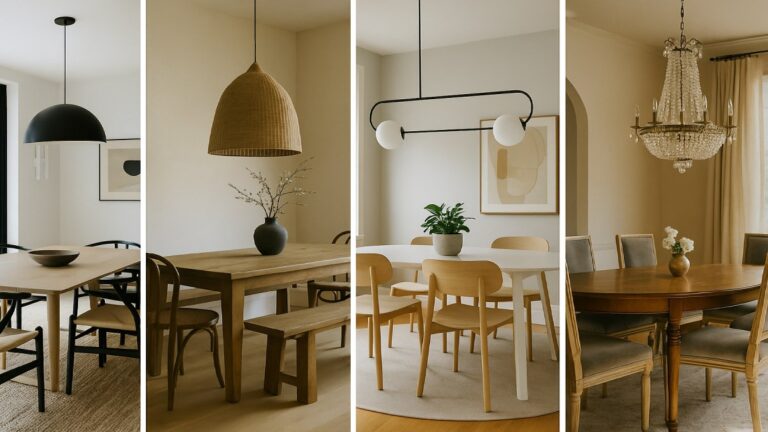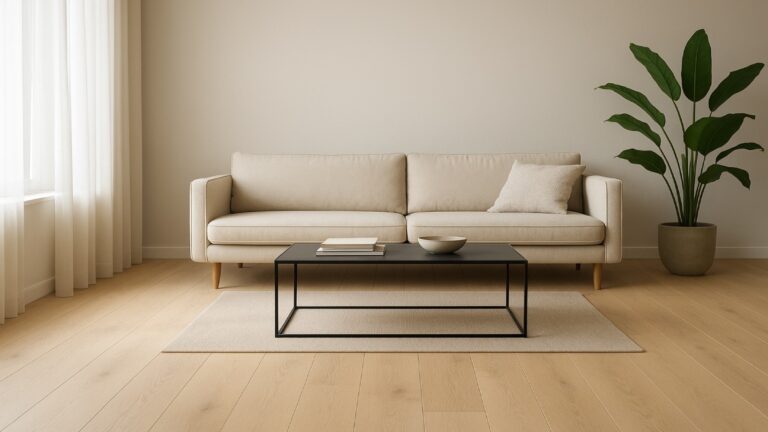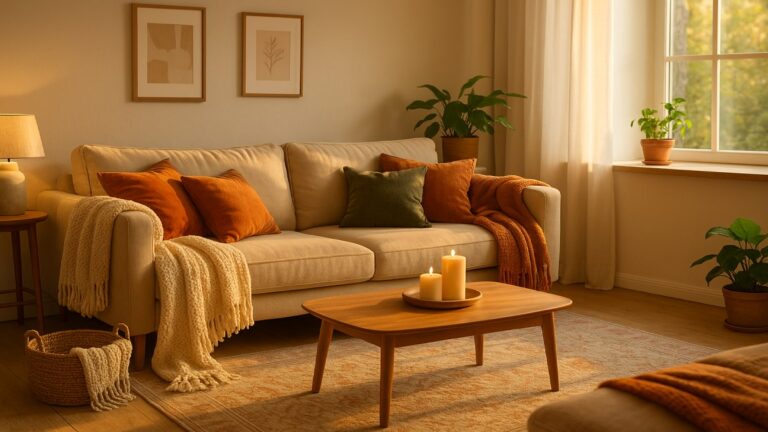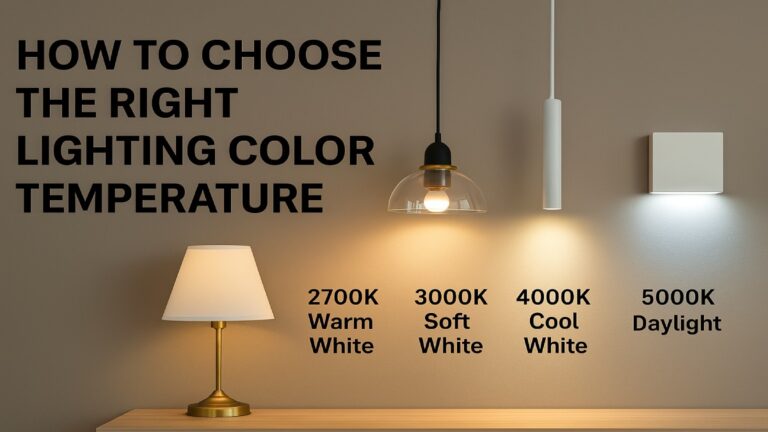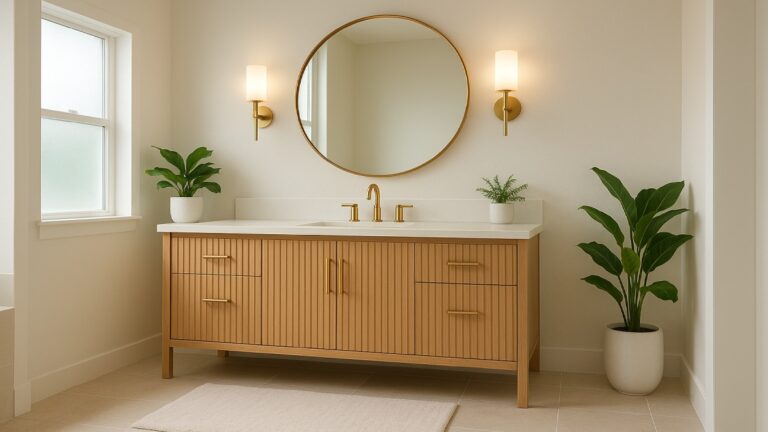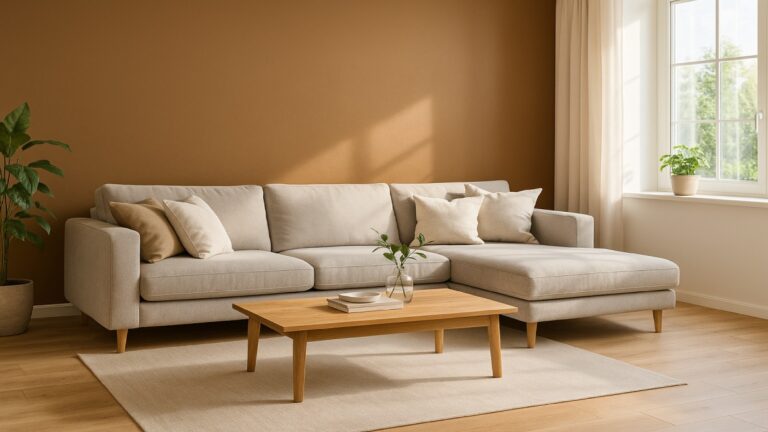Simple Ways to Add Color Without Repainting Walls
Staring at plain white or beige walls can make even a stylish room feel lifeless. Yet painting isn’t always an option — renters face restrictions, and homeowners may not want to deal with the expense or effort. Fortunately, you can transform a space without a single brushstroke. By layering color through fabrics, décor, lighting, and temporary features, you can create an inviting home that reflects your personality and keeps up with design trends.
This guide shares easy, renter-friendly, and affordable ideas to bring vibrancy to your interiors. Whether your goal is to make a neutral living room more dynamic or to create a cozier bedroom atmosphere, these creative techniques will help you add warmth, texture, and personality without opening a paint can.
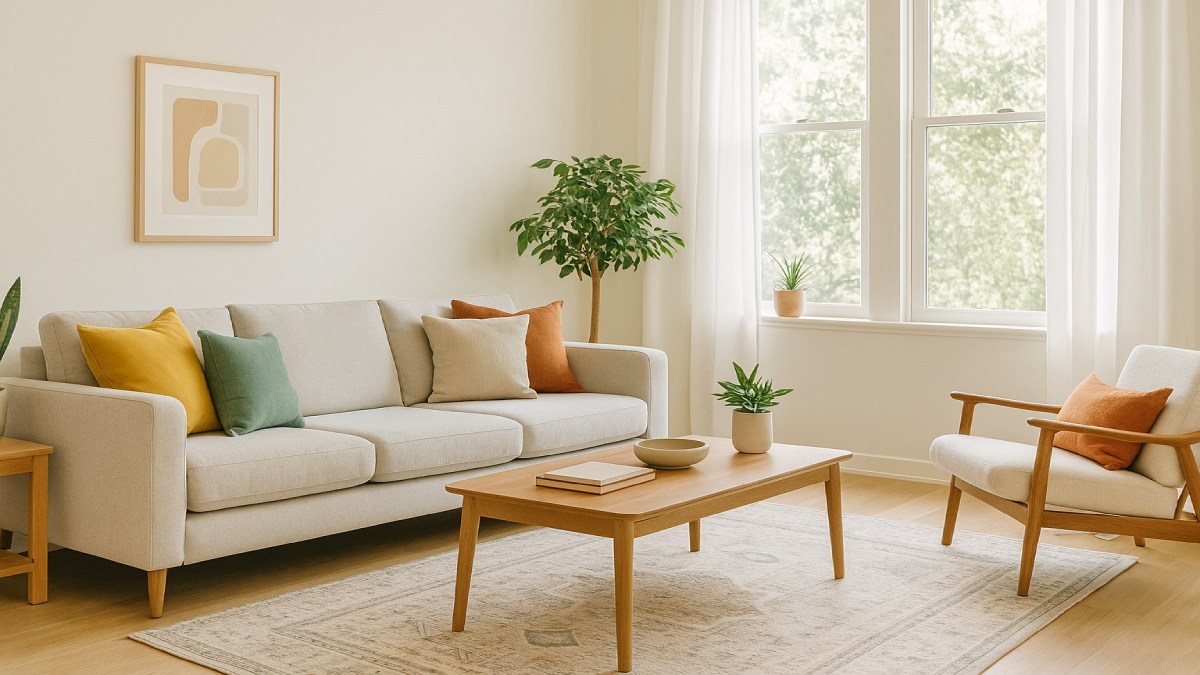
Why Add Color Without Painting?
Adding color without paint offers flexibility and freedom. You can refresh your décor often, adjust to seasonal palettes, or express your personality without long-term commitment. For renters, it’s a way to personalize a space without losing a deposit. For homeowners, it’s a practical method to test new tones before making permanent changes.
Color also affects mood and energy. Warm shades like terracotta or mustard create a cozy vibe, while cool tones like sage or soft blue promote calm. Introducing these hues through furniture and accessories can make a neutral backdrop feel intentional, balanced, and full of character.
Start with Textiles — The Softest Way to Add Color
Textiles are one of the most effective ways to bring life to a room. They’re affordable, easy to switch out, and available in endless textures and patterns. Start small and build layers until the space feels right.
Use Area Rugs to Define Spaces
A large area rug can completely transform a neutral room. Rugs add visual warmth, define zones in open layouts, and serve as focal points. In a living room, a rug that picks up tones from nearby cushions or curtains helps create cohesion. Layering smaller rugs on top of neutral flooring adds depth and visual interest. Geometric patterns feel modern, while distressed or woven designs add vintage charm.
Refresh with Curtains and Throws
Window treatments set the mood. Airy linen drapes in dusty pink or sage create softness, while velvet curtains in emerald or navy add drama. Throws and cushions are your easiest color tools — they take minutes to swap and can follow seasonal trends. A neutral couch instantly looks new when accented with mustard cushions or a rust-toned throw blanket.
Update Bedding and Upholstery
In bedrooms, textiles dominate the visual field. Layer bedding in complementary tones — for instance, pair a white duvet with sand-colored sheets and an olive blanket. Reupholstering chairs or headboards in textured fabrics like boucle or velvet can also shift a room’s tone without touching the walls.
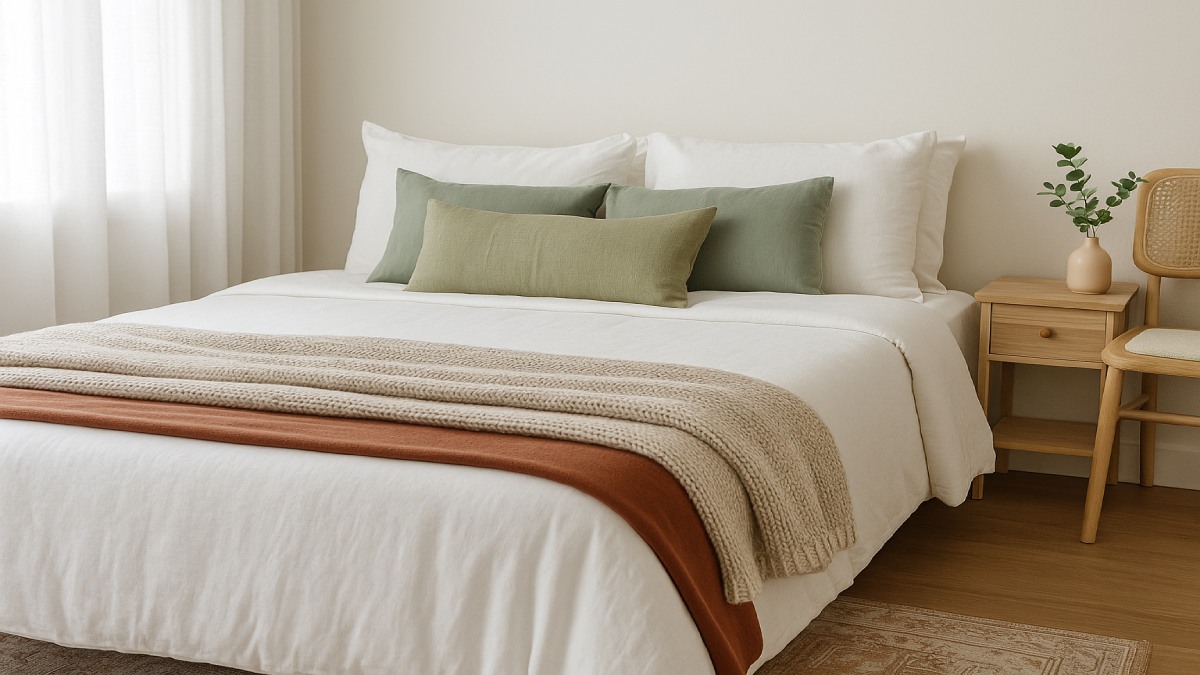
Use Décor Accents for Pops of Personality
Art and Wall Hangings
Artwork introduces color and emotion instantly. Create a gallery wall with prints that share a cohesive palette or rotate seasonal pieces for a fresh look. If you’re renting, use removable adhesive hooks. Large framed art or oversized canvas prints make an even bolder statement while leaving your walls intact.
Color Through Furniture and Small Décor
Colorful furniture anchors a space and sets its tone. Try a teal accent chair, mustard ottoman, or vintage cabinet in forest green. Smaller décor pieces — vases, ceramics, lamps, and picture frames — provide layered color without clutter. For a harmonious scheme, repeat a color in at least three places around the room.
Incorporate Plants and Natural Hues
Plants add both color and texture. Their natural greens balance bold décor while purifying the air. Use terracotta planters, rattan baskets, or matte black pots to complement your color palette. Mixing plant heights and textures creates dimension and liveliness even in minimal spaces.
Add Depth Through Lighting and Reflections
Lighting plays a subtle but powerful role in the way we perceive color. By adjusting the type, direction, and temperature of light, you can transform the atmosphere of your home.
Play with Light Color Temperature
Warm lighting makes spaces feel cozier and more intimate, while cooler tones emphasize cleanliness and focus. Smart LED bulbs allow you to change temperature and brightness with ease — ideal for creating a soft evening glow or daylight brightness for productivity. If you crave variety, consider dimmable fixtures or color-changing smart bulbs to shift your ambiance throughout the day.
Highlight with Lamps and Fixtures
Statement lighting doubles as décor. Try metallic pendants in gold or copper for warmth, or ceramic lamps in matte pastel finishes for a soft color accent. When paired with natural daylight, they add layered illumination that flatters every surface.
Experiment with Mirrors and Shadow Play
Mirrors reflect both light and color, expanding visual space. Position mirrors opposite windows or near colorful elements to amplify their effect. Framed mirrors in brushed brass or black metal can add structure and sophistication to any room.

Temporary Surfaces and Creative Backdrops
Peel-and-Stick Wallpapers or Tiles
Peel-and-stick surfaces have revolutionized interior decorating. These removable wallpapers come in countless colors and patterns, from minimalist geometric lines to lush botanical prints. For kitchens or bathrooms, peel-and-stick tiles can introduce mosaic-style accents that mimic ceramic or stone. They’re easy to remove, making them perfect for renters and design experimenters alike.
Fabric Wall Panels or Tapestries
If you prefer texture to pattern, hang large fabric panels or tapestries. Linen, macrame, or printed fabrics add softness and movement to otherwise plain walls. Foam-backed fabric boards can even act as sound absorbers, blending function with style.
Decorative Screens or Art Panels
Freestanding folding screens or mounted art panels can divide open areas while providing color focal points. Choose finishes like cane, rattan, or lacquered wood for organic warmth that contrasts with neutral walls.
Revive With Functional Accents
Colored Storage, Shelves, and Baskets
Storage can double as decoration. Painted wooden crates, woven baskets in warm tones, or open shelves styled with colorful books and ceramics all enhance the visual appeal of a space. Keeping functionality and design in harmony helps maintain both style and order.
Update Hardware and Fixtures
Replacing small hardware pieces — cabinet handles, drawer pulls, faucet knobs — is an easy way to tie color schemes together. Brass, matte black, or brushed nickel finishes instantly modernize a space. The gleam of metal complements surrounding hues without overpowering the room.
Seasonal Rotations for a Fresh Look
Adopt a capsule décor strategy. Switch out small accents like cushions, flowers, or artwork each season to reflect evolving color trends. For spring, use pastel greens and blush tones; in fall, swap in deep ochres and rusts for warmth. This rotating approach keeps your home dynamic and in tune with your mood.
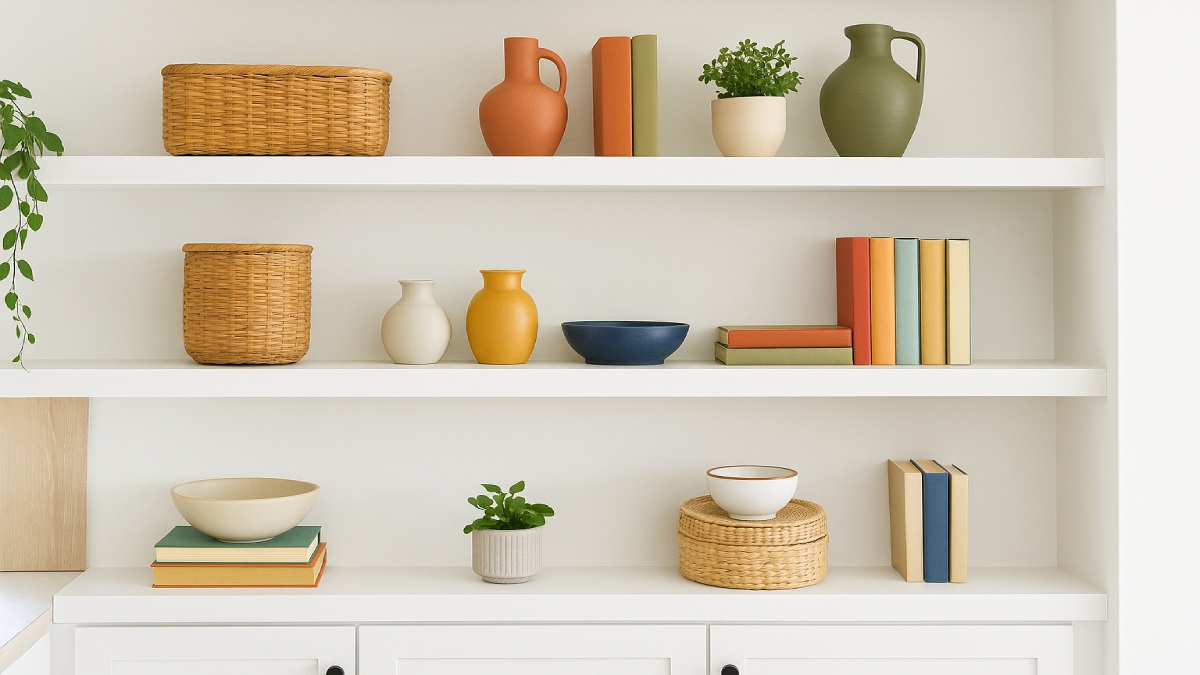
Small DIY Projects That Add Lasting Character
Paint Furniture or Trim Instead of Walls
If you crave paint but not permanence, try it on furniture instead. Painting a dresser, side table, or just the trim adds contrast without commitment. Choose semi-matte or chalk finishes for modern, muted charm.
Create a Colorful Headboard or Art Frame
DIY headboards wrapped in patterned fabric or a wood frame painted in a bold color can redefine your bedroom’s focal point. For wall art, experiment with color-blocking frames that complement existing décor.
Upcycle With Accent Colors
Revive old décor pieces with small updates. Spray-paint vases, lamps, or mirrors in trendy hues like sage, butter yellow, or terracotta. These subtle tweaks give outdated pieces a new lease on life.
Expert Tips for a Cohesive Color Scheme
To keep your color story cohesive, follow the 60-30-10 rule: use 60% neutral, 30% secondary color, and 10% accent. Warm and cool undertones should harmonize — for instance, pair creamy whites with warm browns or crisp whites with cool grays.
Stick to a limited palette across connected rooms. Consistent tones create flow and make spaces feel larger. If you love experimenting, use smaller accessories to introduce bold shades temporarily before committing to larger elements.
FAQs About Adding Color Without Repainting
Can I add color to a rental without risking my deposit?
Yes. Use removable wallpaper, peel-and-stick tiles, or adhesive wall art. Soft décor like rugs, curtains, and furniture also personalize your space safely.
What’s the best temporary way to create an accent wall?
Large fabric panels or peel-and-stick wallpaper make excellent statement backdrops that peel off easily when you move out.
Do colored lights actually change how a room feels?
Absolutely. Warm light tones make rooms feel intimate, while cooler light enhances clarity and spaciousness. Smart bulbs offer adjustable settings to match your activity or mood.
What’s the cheapest way to make a neutral room vibrant?
Textiles and décor accents — cushions, rugs, or plants — offer the biggest visual change for the smallest investment.
Conclusion: Transform Your Space, No Paint Needed
Adding color doesn’t require a single drop of paint. From layered textiles and statement lighting to temporary wallpaper and simple décor swaps, there are endless ways to refresh your interiors creatively. The key is balance — use color intentionally to highlight, not overwhelm. By experimenting with fabrics, finishes, and lighting, you can build a vibrant space that feels uniquely yours, all without repainting a single wall.

